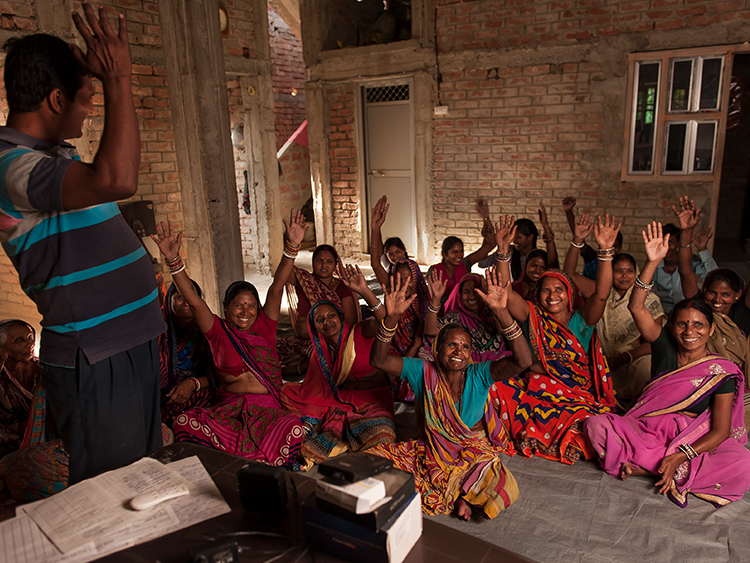To learn more about Digital Green’s AI-powered platform and how it impacts small-scale farmers in India, Ethiopia, Kenya, Nigeria and Brazil, we encourage you to sign up for our newsletter.
Keeping it Simple: Technology for Smallholder Farmers

Agricultural practices in developing countries such as India are often influenced by traditional practices and farmers’ collective wisdom, which do not necessarily translate to optimal productivity or profits. Also, recent studies reveal that most small-scale farmers or the youth in the farming families no longer view farming as a sustainable livelihood source.
However, as per India’s census of 2011, 263 million people are engaged in the agriculture sector. It provides employment to 56% of the Indian workforce. The sector’s performance has strong ripple effects on other sectors, directly or indirectly, as well as far-reaching implications on the social, political and economic spheres.
Most agricultural extension and advisory services in developing countries have been following traditional methods including on-farm demonstrations, organizing farmer groups, and farmers’ training, training of extension providers and developing training modules and materials. However, these have been costly, slow and limited in effectiveness due to various reasons such as generic, top-down content and language barriers.
It was almost ten years ago that a group of engineers and economists in Microsoft Research’s Technology for Emerging Markets office in Bengaluru, India hit upon an idea to support agricultural extension. The solution was quite simple– to involve the community itself in developing content by putting the technology into their own hands– and which proved to be at least ten times more efficient and seven times more likely to encourage farmers to adopt new practices compared to conventional agricultural extension systems.
The idea eventually spun off as a non-profit–Digital Green–which developed the approach further. To ensure usage of technology available to smallholder farmers in a manner that connects the farmer with the content, a community video production team creates videos using simple, low-cost tools, averaging eight to ten minutes in length. The content is locally relevant, evidence-based and produced in the local language. Members of the community are cast in these short videos enabling viewers to connect instantly with the message. Subject matter experts review the video content before it is finalized for screening using battery-operated Pico projectors where a trained village resource person mediates a discussion around it. Followups are done regularly to ensure the adoption of actual practices.
According to the FAO, global food production will need to rise by 70% to meet the projected demand by 2050. This points to a critical need to act quickly to support farmers–especially, smallholder farmers who account for 80% of global agricultural production from developing regions–get timely and correct information to increase production and gains.
Despite several well-meaning attempts to use ICTs for empowering communities, its true potential is yet to be harnessed in the agriculture sector while other more complex technologies continue to be developed. Learning from Digital Green’s experience, the solution to this problem lies in capitalizing the rise of, and ubiquitous nature of, information and communication technologies (ICTs). Other low-cost technology such as Interactive Voice Response (IVR) systems and text messages, that smallholder farmers have access to, can also be used to send out additional information or reinforce messages. Various development organizations, technology firms, and research teams have already begun exploring how the Internet of Things (IoT), Artificial Intelligence (AI) and precision farming can be used to empower farmers.
With newer technology being developed, it is possible to provide more nuanced solutions to farmers, if the potential of these technologies is used more effectively. We are currently, in partnership with the Government of Andhra Pradesh’s Department of Agriculture and Cooperation (APDoAC), piloting multiple technologies such as drones and helium balloons as well as soil moisture sensors, weather forecasting systems to test how newer technology can be further engaged to better service smallholder farmers in Andhra Pradesh, India.
This partnership among various organizations dedicated to piloting technology-based innovation in agriculture highlights the importance of tapping into available technology to enable greater productivity in agriculture while empowering the farmers to adapt to newer technology and challenges. As our world evolves, we certainly need more evolved and collaborative ways of adapting the simultaneously evolving technology, to accelerate progress for all.